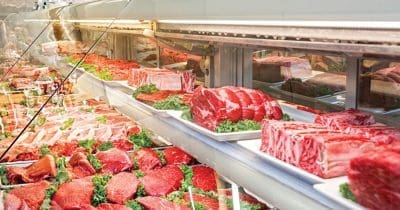By Megan Webb, Ph.D., Contributing Editor
As a beef producer, have you ever walked to the meat counter or isle and been mesmerized by consumers as they engage with beef cuts and identify a selection? Do you ever wonder what made a consumer select a cut or roast? It’s obvious that consumers recognize beef as a great protein choice. To me, it’s beef’s choices that are the beauty of the beef industry because there is an option for everyone’s unique preference.
Consumer preferences are shaped by their perception, which is defined as a set of assumptions resulting from choices that reflect different outcomes such as happiness or satisfaction. As individuals, we are uniquely diverse and have different social and ethnic backgrounds that contribute to our individuality and perception. Our initial and life experiences imprint our preferences for products, including protein.
Now, that doesn’t mean that some outliers for preference among social or ethic behaviors do not occur, but for the majority, persons like what they grew up with. For example, Baby Boomers may prefer grass-fed and dry-aged beef more than other age categories, possibly because it reminds them of what they grew up with. Sixty years ago, it was fairly common for families to raise their own livestock on pasture and “hang a beef” in the barn during a cooler season to let it age. In fact, my master’s research identified this theory, and the outcome strongly suggests that people like what they grew up with. Perhaps consuming something familiar brings back positive memories of one’s childhood or experiences with family. The beef industry is no stranger to repeatable beef purchasers who recognize the type of beef and cuts they enjoy.
Many persons like beef for its healthy impacts on human nutrition while delivering a desirable taste. Health-conscious consumers find beef a beneficial option to satisfy the five to seven needed ounces of lean meat per day in their diet. These consumers can choose from more than 20 “lean” beef cuts that have fewer than 10 grams of total fat and fewer than 4.5 grams of saturated fat. A majority of these cuts come from the loin, round and lean beef trimmings.
Also, the protein from beef is high – at around 26 percent – which is much greater than other proteins. Relative to vegetables, beef has a greater biological protein value, meaning that protein from beef is more readily absorbed for protein synthesis. Beef is also high in heme iron, which is more easily absorbed by the body. Beef is also dense in nutrients as it contains nine essential amino acids and B-vitamins, as well as zinc, iron, minerals and protein, which are important for growth, immunity and wound healing. Beef is regularly identified by consumers as a great source of protein because of its powerful impact on human health.
Consumers’ perception of beef is impacted by its flavor, which regularly results in a positive eating experience. Consumers have confidence with beef’s palatability because of its tenderness, juiciness and flavor and their understanding of the USDA Quality Grades. Consumers have been proven to pay for a more desirable eating experience by selecting USDA Choice over USDA Select steaks, or purchasing premium beef with taste or tenderness guarantees, for example. Often, these more premium whole-muscle cuts contain a greater degree of marbling or more abundance of the white flecks of interior fat. Many consumers prefer the flavor of these cuts that predominately come from the middle meats, and have greater fat content, which isn’t necessarily bad for you.
Consuming proportionate amounts of fat can be good for you because it is needed to help dissolve vitamins A, D, E and K, and it serves as a substrate for hormone production and neurological brain development and function. The amount of marbling, visually identified by a consumer in a raw whole-muscle cut, can shape their perception, selection and ultimately the expectation of how palatable the product should be when consumed.
The pandemic is a true testament of what shapes consumers’ perceptions, and that is trust. Beef was notably a purchased and in-demand protein from the retail aisle that was desired by families looking to stock up. Other “fake meat” options remained on the retail shelf as it seemed to be clear that consumers, during a time of need and despair, identified trusted proteins to purchase.
Notably, conditions can impact beef price, and availability can affect consumer perception. Budget-friendly beef is often searched for when demand is high and supply is low, such as the flatiron steak, an icon for an affordable, tender and juicy eating experience.
Summer weather conditions can also influence a person’s perception. For example, brisket prices are known to increase in the summer due to high demand, yet people want to celebrate with beef and are willing to pay for the experience that it provides to their families and friends.
How consumers perceive beef is powerful. As cattlemen and cattlewomen, we are blessed that the bounty from our harvest is so well received.
E-mail comments to mjwbeef@gmail.com





